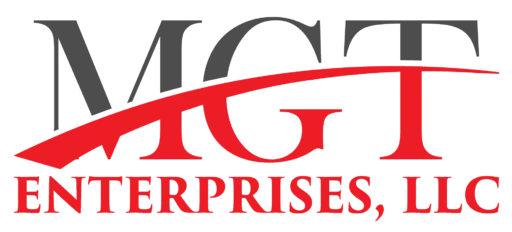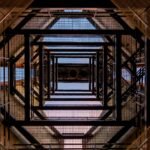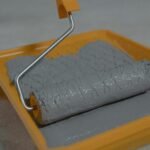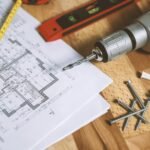In beach and wet climates, buildings have an unseen and relentless adversary: corrosion. From salt-laden sea air to relentless coastal humidity in the air, conventional framing materials tend to rot sooner rather than later. That is where corrosion resistant metal framing enters the scene, expressly designed to survive where most buildings fall apart.
Whether you’re designing a beachfront property or a commercial complex along the bay, metal framing coastal construction requires careful determinations. In this article, we’ll discuss the most effective corrosion-battling materials, protective coatings, and fastener solutions, and industry standards as well as maintenance advice that make structures last longer, perform better, and withstand the test of time.
Why Corrosion Resistance Is Necessary
Coastal Corrosion Risks
In coastal areas, metal framing has to face specific risks because of salt spray and the humid environment. Both of these elements have the tendency to stick on surfaces, which then results in crevices, and accelerate oxidation that promotes quicker deterioration compared to inland areas.
Similarly, wind direction and building position are other involved attributes. If your building is in the vicinity of the splash zones or hit with prevailing winds, then it suffers from increased exposure, which encourages rust, surface pitting, and ultimately material weakening. Conventional steel framing is simply not strong enough to withstand these harsh coastal forces without shielding.
Structural Impacts of Corrosion
Corrosion of critical members like connectors, anchors, and load-carrying members compromises their strength. Over time, this weakening erodes the integrity of the structural load paths, leading to probable collapse or devastating damage due to harsh weather.
According to FEMA and NFIP standards, corrosion poses major dangers in coastal building design. Anchorage and undermined framing can’t transfer forces in times of flooding or high winds, thus corrosion becomes not just a maintenance issue, but a core safety concern that must be dealt with utmost priority.
Material And Coating Choices
Stainless And Galvanized
When it comes to corrosion resistant metal framing, stainless steels like 316, 316L, and duplex 2205 are the perfect choice for enduring chloride-rich coastal regions. Not only do these solutions have good resistance against pitting but also crevice corrosion, especially in splash-prone conditions.
For the more heavy-duty hot-dip galvanized metal framing coastal structures, coatings like G185 or higher provide the ideal sacrificial protection. The zinc coatings are consumed first, saving the steel below. Applied correctly, they prolong framing life in marine or wet environments where moisture and salt are ever-present dangers.
Cutting-edge Coatings And Alloys
New materials are redefining corrosion resistant metal framing. Aluminized steel unites steel’s strength and aluminum’s resistance to oxidizing in a tough barrier well-suited for humid environments. Polymer-graphene coatings, while newer, have promising laboratory-proven saline exposures.
For coastal construction that demands high-performance metal framing, use copper-nickel or aluminum bronze alloys. They are resistant to corrosion by seawater without depending entirely on coatings and are thus well-suited for critical structures near shorelines or tidal areas. Their durability over the long term negates their initial cost premium.
Fasteners And Connectors in Coastal Framing
Code-Required Components
According to coastal construction metal framing codes, FEMA Technical Bulletin 8 and ASCE 24 require corrosion-resistance fasteners and connectors for hurricane-prone and flood-prone regions. The structural stability of the building during storm surges and high winds is maintained through these requirements.
In order to act as competent corrosion resistant metal framing, the elements must have reliable load paths, especially where moisture and salt exposure is constant. Fastener failure is a primary cause of premature system failure, and code-compliant selection is consequently required to maintain durability in coastal areas.
Corrosion Best Practices
The key to all corrosion-resistant metal framing systems is the fastener durability. Stainless or heavy galvanized as like ASTM A153 performs best in salt-contaminated atmosphere. Don’t go for economy class coatings that corrode rapidly in damp conditions.
For coastal construction using metal framing, avoid using dissimilar metals, which can lead to galvanic corrosion. Use compatible washers, clips, and anchors. Periodic checks in exposed zones provide early signs of wear, protecting the frame as well as its point of connection from weathering.
Design And Construction Guidelines
Storage And Handling
Before installation, corrosion-resisting metal framing must be protected from transport and on-site storage. Never pile materials on wet ground or expose them to wet or salty air for extended periods.
In metal framing along the coast, corrosion can occur even in the initial stages before actual framing is done. Use permeable but water-resistant coverings, and install weather-resistive barriers on the commencement of framing. These ensure structural integrity compromise due to penetration of salt, condensation, or rain is reduced.
Engineering Considerations
Smart design is essential for durable corrosion resistant metal framing, especially in coastal climates. Stick with ASTM A1003 to guarantee that protective coatings fulfill exposure requirements. This can help replicate salt spray performance within pre-build testing.
In coastal metal framing construction, always consider the distance to the shoreline. Buildings within 250 feet or closer to the ocean are in an extremely aggressive corrosion category. This influences material selection, coating thickness, and joint sealant practices to avoid premature failure.
Maintenance And Inspection
- Periodic Inspections — Regularly inspect all corrosion resistant metal framing parts, which includes connectors and joints, after every storm or seasonal change to find early evidence of rusting, wear, or material stress.
- Alternatives of Fasteners — Any corroded, loose, or damaged fasteners should be replaced quickly. In metal-framed coastal buildings, corrupted hardware can weaken the structure and encourage saltwater intrusion that speeds up framing degradation in the long run.
- Safe Cleaning — Use only cleaning chemicals that are compatible with metal coatings. Harsh chemicals or unsuitable combinations can cause galvanic corrosion, particularly in environments high in chloride, such as coastal or humid regions.
Framing That Fights Back
Using corrosion resistant metal framing is a must to accomplish safe, durable metal framing coastal construction jobs. By just choosing the proper materials, protective coatings, and fastener care, you can outwit even the toughest of marine environments. And through the aid of clever engineering and regular checks, your building won’t just last, but will actually flourish, even when salt and dampness attempt to turn against it.






